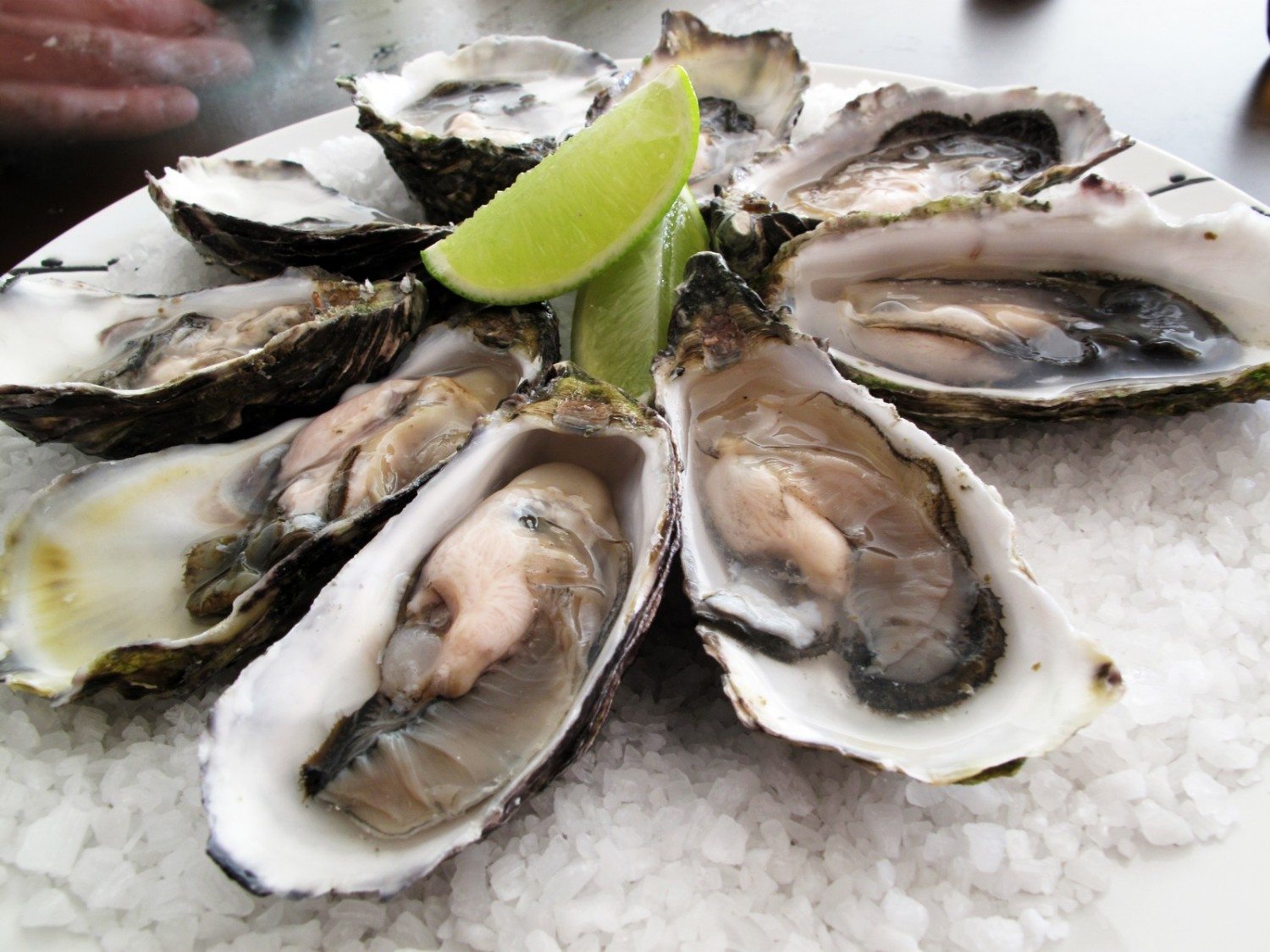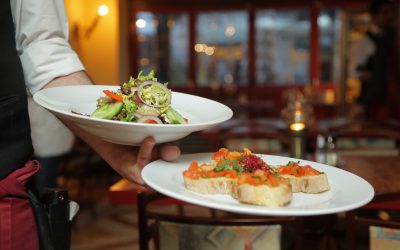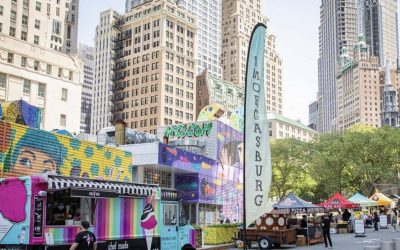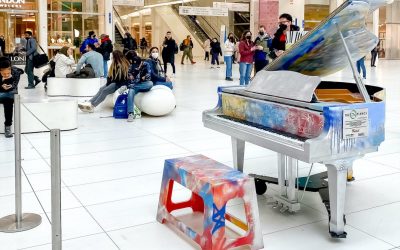
Photo: courtesy of New York Harbor Foundation
“The history of the New York oyster is the history of New York itself—its wealth, its strength, its excitement, its greed, its thoughtfulness, its destructiveness, its blindness, and—as any New Yorker will tell you—its filth.” — Mark Kurlansky, The Big Oyster: History on the Half-Shell
Did you know the New York Harbor used to be filled with oysters? Tremendous big beds of natural-growth oysters and seahorses too. There used to be a whole marine ecosystem down there—a streaming, teeming underwater reflection of New York itself—before sewage dumping, pollution and over-harvesting wiped most of them out in the 1800s. Nurturing that ecosystem back to life has proved to be quite a task.
The New York Harbor, with its fluctuating balance of salt and fresh waters, is actually the ideal environment for oysters to thrive in. But it wasn’t until the Clean Water Act of 1972 that regrowth became a possibility.

Photo: courtesy of New York Harbor Foundation
Oysters act as living filters that help keep the waterways healthy and clean. A single oyster can filter as much as one gallon of water per hour. New York’s original oyster population was capable of filtering all of the water in the harbor in a matter of days. In addition, oysters grow in cemented reef formations, and these can act as natural barriers against storm surges like Hurricane Sandy. Oysters are what’s called a “keystone” species because they enable other life to flourish. On top of that, they are delicious.

Photo: courtesy of New York Harbor Foundation
Enter the Billion Oyster Project, an initiative to revitalize the harbor’s marine ecosystem through mobilizing public school students as “citizen scientists.” The project’s stated mission is to add a billion live oysters back into the harbor by the year 2030. It launched in 2010 with six experimental reefs around Governors Island and has gone on to introduce 11.5 million oysters into the New York Harbor, with satellite nurseries extending as far as the Bronx and Coney Island.
The National Science Foundation (NSF) recently awarded a grant of $5 million to the project (and sister projects), thanks to efforts by Dr. Lauren B. Birney, Professor of Education at Pace University and Co-Director of the school’s STEM Collaboratory NYC. Birney is a formidable ally for sea creatures and educators everywhere. She boasts nearly 30 years’ experience in STEM education at both the high school and university levels. She’s also been admirably proactive in enabling underrepresented public school students and teachers to engage in hands-on scientific fieldwork.
“You can’t sit behind a computer screen and do research. You have to go out, you have to get funding,” Birney explained in a panel discussion about her work and the NSF grant at Pace University on October 27. “It’s up to you to foster your own ecosystem. Grow your own niche. I try to instill that in my students.”

Photo: courtesy of New York Harbor Foundation
In order to bring the Billion Oyster Project to reality, its founders—Murray Fisher and Pete Malinowski—in partnership with such forces as Dr. Birney and colleagues at Pace—have slowly expanded their vision to encompass a picture much larger and more profound than any individual person could have imagined at its start. The project mobilizes people across vastly diverse disciplines—from biologists and engineers to artists and educators. And thanks to developments in technology, like data collection and mobile communication, the Billion Oyster Project is able to foster a community around oyster rejuvenation that reaches far beyond the present day. It is a project in environmental stewardship that has inspired partnerships and creative applications of resources on a scale that is truly stunning.
Most importantly, oyster rejuvenation promotes a culture of “citizen science,” in which everyday students and volunteers are encouraged to be responsible, to roll up their sleeves and think critically. Kids are being taught to affect positive change in their own environments. This is the real aim of the Billion Oyster Project—to raise a generation of “citizen scientists.”

Photo: courtesy of New York Harbor Foundation
The production hub for the Billion Oyster Project is the New York Harbor School, a public high school located on Governors Island, in the heart of the city’s waterways. The school is only accessible by ferry, and it provides a hands-on learning environment for students who want to immerse themselves in marine science and technology. Students earn certificates in diving and boating, they collect data in the field, and they relay their data to real-life scientists via mobile devices that have been provided by the Billion Oyster Project.
This school honestly sounds like the most fun school on the planet—and the fact of the matter is that this hands-on style of teaching also equips students with applied skills in math and engineering, and other invaluable assets for when they enter the workforce. Whether the students of the Harbor School will all go on to pursue work in STEM fields after high school or not, they will surely bring this training in real-world problem solving and personal responsibility to the professions that they do choose.
“The piece that’s often missing in education is the application,” Birney explained. “These kids are learning to use real technology. Assuming they don’t drop it in the water,” she joked. To date, the Billion Oyster Project has engaged 2,150 high school students, 875 middle school students, and it has restored more than 1.05 acres of reef area.

Photo: courtesy of New York Harbor Foundation
One of the many interesting components of the Billion Oyster Project is that it helps recycle waste from restaurants, in the form of oyster shells. Participating restaurants donate empty oyster shells to students, who then use the shells to incubate new oyster larvae. So far, the project has recycled 93,600 pounds of shells.
Historically, New York restaurants have had a terrible time figuring out what to do with oyster shell waste. The shells have been burned, placed in piles, and even turned into mortar paste to aid in the construction of buildings. Trinity Church is an example of a building that was built with oyster-shell mortar paste. It’s taken people a remarkably long time to realize the best thing to do with shells is to simply give them back to the oyster beds.

Photo: courtesy of New York Harbor Foundation
At the New York Aquarium on Coney Island, students from the Harbor School train for their diving certificates during the winter months when it’s too cold to dive in the harbor. They also clean the Aquarium’s fish tanks and monitor the PH levels of the water. Interestingly, this brilliant collaboration emerged in part out of the Aquarium’s efforts to rebuild itself after Sandy hit the boardwalk at Coney Island.
“Anyone who has had to deal with FEMA funding post-Sandy knows what a Kafka-esque nightmare it is,” explained Jon Forrest Dohlin, Vice President of the Wildlife Conservation Society and Director of the New York Aquarium. He accompanied Dr. Birney on the panel discussion at Pace University last Tuesday night.
Dohlin has been instrumental in rebuilding the New York Aquarium through fostering academic and educational partnerships. Thanks to his efforts, the Aquarium now offers a substantive education program, it features an artist in residence, and it is in the process of building new interactive exhibits that will inform visitors about the history of the rich marine wilderness that surrounds New York.

Photo: courtesy of New York Harbor Foundation
How does one get to be the Director of the New York Aquarium? Dohlin himself has an eclectic background. He studied both biology and architecture, and he worked in a variety of trades before slowly rising by the force of his own propelled momentum inside the cultural institutions of New York.
“The one unifying thread in my career path has always been my deep love for nature, and my commitment to environmental conservation,” Dohlin said. “What does the seascape mean to this city? Well, it means a lot ot me.”
The lesson to take away from all of this is that we are actually living in an amazing moment in history. The walls between disciplines are coming down, and those people who are truly driven to accomplish their goals and affect change in the world are emerging and making incredible things happen. It is no longer effective for academics or anybody to work inside of silos. We should be out in the world. We should be working together. As the ago-old saying goes: “The world is your oyster—as long as you have the wherewithal to grow it.”

Photo: courtesy of New York Harbor Foundation
To give you an idea of how Dr. Birney has built and fostered her own impressive working world: seven graduates from her education program at Pace have gone on to become teachers at the Harbor School, and these are the teachers who got her involved in the Billion Oyster Project. “These ecosystems need to be tended to everyday,” Birney explained, speaking not only about oysters, but also about the importance of community, collaboration, hard work and responsibility. Birney worked as a high school biology teacher in California for 20 years before moving into higher education. She is clearly a person on a mission.
“Herding cats wasn’t in my job description,” she said. “But I do it. It’s been really challenging, but I do it.” She also described the application process for the NSF grant as like being in a horse race. “You need to keep blinders up against the mud flying in your face and just keep going. Keep your eye on the finish line,” she said. “I wake up every day and I love my job. It’s not a job, it’s a career.” Fortunately for Dr. Birney and her colleagues at the Billion Oyster Project, the National Science Foundation supports their endeavor.
The NSF grant will enable the Billion Oyster Project to equip as many as 40 to 60 new public school teachers around New York with the tools they need to participate in the oyster restoration project. The teachers will be provided with training and materials like oyster cages, larvae, and scientific monitoring equipment. In turn, the teachers will be able to animate curriculum in their classrooms about the history and ecology of New York’s harbor, and they will take students on periodic field excursions to care for their oyster stations in the water.

Photo: courtesy of New York Harbor Foundation
“My relationship with oysters is white wine,” joked Archana Shah, Associate Director of the Helene and Grant Wilson Center for Social Entrepreneurship at Pace University. The Wilson Center is a program at Pace that focuses on the intersection of entrepreneurship and philanthropy—basically, it’s a program that enables nonprofits to find funding. Shah acted as moderator for the panel discussion on Tuesday night.
Thanks to the admirable work of such people and such organizations, this reporter believes that New Yorkers will continue to enjoy oysters and white wine for a very long time. And while it may be true that oysters don’t give to charity because they’re shellfish, the reality is that many New Yorkers are extraordinarily generous and giving when it matters. To learn more about how to get involved with the Billion Oyster Project, check out their volunteer page here.
-by Rachel Veroff
twitter: @rachel_veroff













